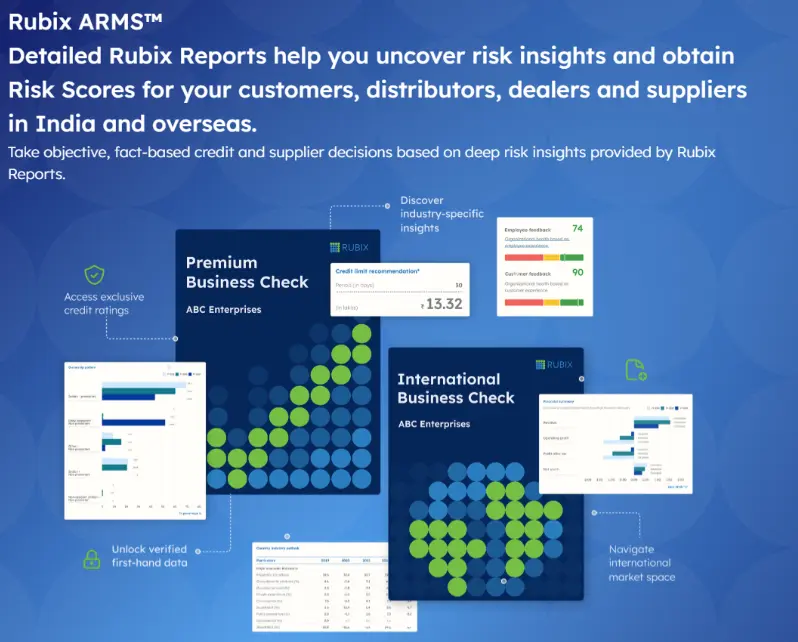Tech and Trends
The Great Data Grab: Why Everyone Wants Your Supply Chain Data & How CFOs Should Respond

Modern supply chains’ analytical insights reveal that 61% of finance leaders consider Data Security their top priority. Data breaches have reached unprecedented levels, and 64% of businesses believe nation-state-sponsored cyberattacks have targeted them. The situation becomes more concerning when 63% of companies acknowledge they wouldn’t recognize a hack if it happened. These challenges have prompted organizations to rethink their approach to Master Data Management.
But why is this happening now? The answer lies in the growing strategic importance of supply chain data, which is fast becoming one of the most hotly contested digital assets. Governments want it for regulatory oversight. Investors demand it for ESG scoring. Tech platforms crave it for analytics. Amidst this gold rush, CFOs are at the front lines—tasked with balancing transparency, security, and value creation.This article examines your supply chain data’s value as a crucial currency and how CFOs can lead the charge to manage it effectively.
Rising Demand for Your Supply Chain Data
The first step to understanding this shift is recognizing how supply chain data has evolved into a valuable asset for companies, their trading partners, regulators, investors, ESG raters, banks, insurers, and tech platforms. The growing demand is driven by business imperatives, regulatory compliance, financial risk management, and consumer expectations. One major driver is the quest for supply chain visibility. According to industry research, 80% of respondents have projects actively running to improve supply chain visibility. Companies today need end-to-end visibility of their respective supply chains and all businesses that are part of each chain.
Take for instance a hypothetical company LMN. After grappling with recurring stockouts and delayed deliveries, LMN realized the root of the problem wasn’t always operational inefficiency—it was the lack of timely information flow between various parts of the supply chain that resulted in friction, causing costly delays. LMN understood that linking data across their supply network could help them spot and tackle potential issues quickly. These could be material shortages, manufacturing delays, or shipping disruptions. With a clearer view of their supply chain, LMN would be able to cut costs, identify operational bottlenecks early, and make faster, more confident decisions.
The message is clear: supply chain data is no longer just operational—it is strategic.
Stricter Regulations
As demand for supply chain data grows, so too does scrutiny over how it is collected, shared, and protected. This brings us to the second key driver: regulation. Stricter regulations have made master data management an imperative for companies. For instance, India’s Digital Personal Data Protection (DPDP) Act, 2023, is a crucial regulation that business leaders need to consider. The Act focuses on personal data governance, but its broader implications affect data handling and security across the enterprise. Companies should ensure that data shared within their ecosystem—whether with suppliers, customers, or third-party logistics providers—adheres to DPDP’s consent-based and purpose-limited framework to avoid regulatory penalties and reputational damage. Globally, research suggests that companies that don’t comply might face penalties up to 10 million euros or lose access to profitable markets.
In this new regulatory era, strong data governance is not optional, rather it is existential.
Customer Expectations
At the same time, a quieter but equally powerful force is reshaping the data landscape: the customer.
Consumer expectations are shifting. People want to know the source of their products, and they are not afraid to change brands if they don’t get the answers. A remarkable 65% of shoppers would switch brands if another company were more open about its supply chain practices. Moreover, 44% of consumer goods companies report they are already sharing data with customers to address these demands. To stay competitive, businesses are increasingly sharing supply chain data to create a competitive difference. For example, food product companies share where they are sourcing ingredients. In this case, supply chain data sharing is not to solve operational issues but to meet increasing consumer expectations. As the pressure to share supply chain data grows from regulators, partners, and consumers alike, companies must find the sweet spot between transparency and data protection to stay competitive and secure. Once again, Master Data Management becomes the enabler, helping companies navigate the twin imperatives of trust and control.
Data Sharing Benefits vs. Security Risks
So, where does this leave CFOs? At a crossroads.
On the one hand, data sharing offers a massive upside. Wharton research suggests that manufacturing companies could save $100 billion through better data sharing across stakeholders. On the other hand, data sharing always comes with vulnerabilities, ranging from cyber attacks to regulatory violations, that organisations need to guard against.
For a CFO, navigating the balance between operational gains and security vulnerabilities is a tightrope walk. Consider the hypothetical company XYZ—a major FMCG player whose CFO, Mr. Arjun, faces this exact challenge. Mr. Arjun knows that sharing supply chain data across XYZ’s sprawling network of suppliers, logistics, and retailers could help in reducing operational friction and speed up operational processes; however this could also expose the company to the risk of data leaks caused by technological and operational gaps and lack of uniform cybersecurity infrastructure and policies across entities in the supply chain. Weak employee training and an inability to track data usage across the various entities in the supply chain further complicates matters, making data breaches a real concern.
XYZ also runs the risk of violating data privacy regulations in other countries by sharing the data without adequate consent and other safeguards.
However, Mr. Arjun also recognizes the potential benefits of data sharing. By investing in robust data encryption, multi-factor authentication, and signing clear data-sharing agreements, his company could reap significant gains: improved demand forecasting, optimized inventory and production planning, and enhanced supply chain resilience.
Importantly, he is also beginning to view data sharing as essential for XYZ’s ESG strategy, especially with investors and rating agencies increasingly demanding traceability around carbon emissions, sourcing practices, and labor conditions. Transparent data sharing is becoming critical not just for regulatory compliance, but also to access green finance, sustainability-linked loans, and improve ESG ratings that influence investor decisions. According to PwC’s 2023 ESG report, 76% of institutional investors said they would remove companies from their portfolios if they didn’t meet ESG performance expectations. Ultimately, for Mr. Arjun and XYZ, the lesson is clear: the real risk lies in not sharing data wisely. As CFOs like Mr. Arjun weigh the many benefits of data sharing versus the inherent risks, the key lies in crafting a smart, secure data sharing framework.
They can lead the development of a Strategic Data Response Framework (SDRF) by focusing on four key pillars:
1. Data Ownership and Governance
- Define: Who owns what data? Clear ownership policies reduce ambiguity and ensure accountability
- Establish data stewards across departments and functions who are responsible for quality, compliance, and lifecycle management
- Create data-sharing protocols that specify who can access or share which data and under what circumstances (internal use, external reporting, monetization, etc.)
2. Data Classification and Access Control
- Classify data based on sensitivity and impact: high (IP, pricing, proprietary forecasts), medium (inventory levels, shipping details), low (general supplier lists)
- Implement role-based access and encryption standards aligned with regulatory requirements like India’s DPDP Act or the EU’s GDPR
3. Real-time Data Collection and Scenario Planning
- Invest in real-time data integration platforms and predictive analytics to surface supply chain risks early
- According to IDC, by 2026, over 50% of global supply chains will deploy AI/ML for real-time forecasting and disruption handling
- Use digital twins and simulation tools to test responses to different disruption scenarios, from weather events, port closures, supply chain delays, etc
4. Data for Risk Management
- Combine operational data with external signals (e.g., weather, port activity, commodity prices) to proactively manage supply chain risk
- Build risk heatmaps and supplier risk scores that can inform procurement, financing, and insurance decisions
- A Deloitte survey found that companies integrating data-driven risk management into supply chains see 30% lower disruption-related losses
In a VUCA world, where volatility and uncertainty test every link in the supply chain, CFOs have a strategic opportunity to lead with data. It is no longer just about owning information—it is about knowing how to share it smartly, securely, and ethically. By building a Strategic Data Response Framework, CFOs can enhance risk resilience, navigate compliance with confidence, and drive stronger collaboration across their ecosystems. The message is clear. Define your valuable data’s ownership, control its flow, and use it to future-proof your enterprise. In today’s landscape, competitive advantage lies not in hoarding data but in sharing it strategically with key supply chain partners to drive optimum outcomes and minimize friction in the supply chain.







